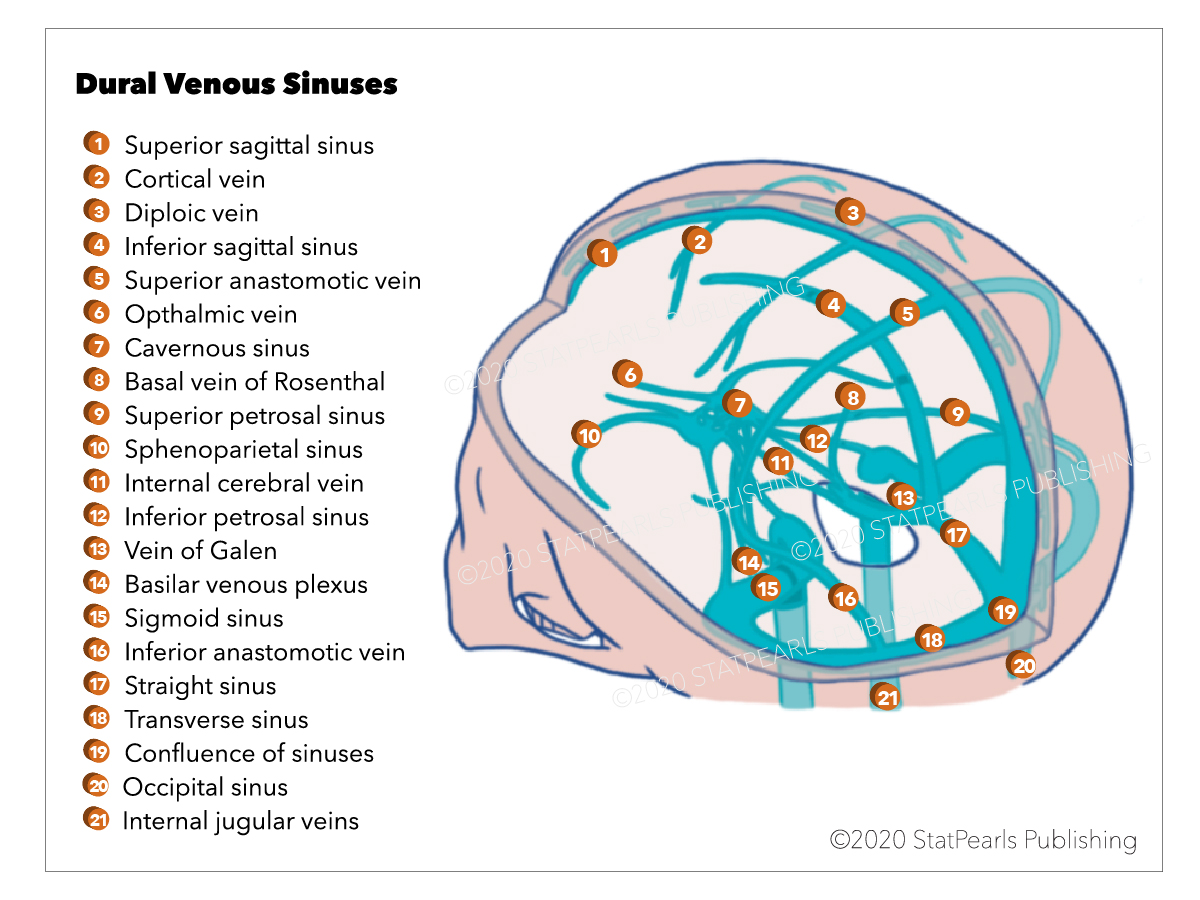Introduction
Dural venous sinuses are a group of sinuses or blood channels that drains venous blood circulating from the cranial cavity. It collectively returns deoxygenated blood from the head to the heart to maintain systemic circulation. There are seven major dural venous sinuses located within the cranial cavity, specifically between the periosteal and meningeal layer of the dura mater: superior sagittal, inferior sagittal, straight, transverse, sigmoid, cavernous, and superior petrosal sinuses. Most of these sinuses are found adjacent to the falx cerebri and tentorium cerebelli. The cavernous sinus is clinically the most important dural venous sinus. Characteristic structures of venous sinuses are vital to physicians and healthcare providers, especially in cases of possible thrombosis and infection.[1][2][3]

